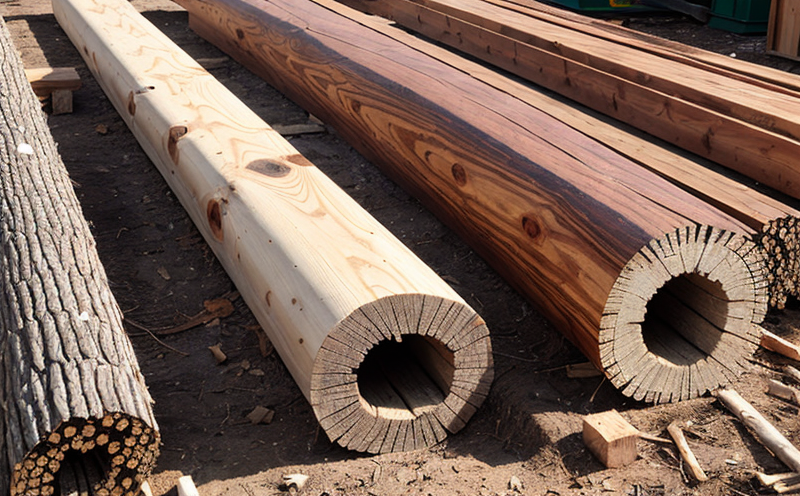Corrosion Effect Testing of Preservatives on Metal Fasteners
The corrosion effect testing of preservatives on metal fasteners is a critical process in ensuring the durability and longevity of wood products used in agriculture, forestry, and construction sectors. This test evaluates how effective various preservatives are at preventing or mitigating the corrosive effects that can occur when metal fasteners come into contact with treated wood.
Corrosion is one of the major challenges faced by industries that use treated wood products, particularly in outdoor environments where moisture and other environmental factors contribute to rapid degradation. Metal fasteners such as nails, screws, bolts, and staples are essential components of structural integrity but can be susceptible to corrosion when exposed to preservatives used on wooden structures.
The testing process involves the application of a preservative solution onto wood specimens with embedded metal fasteners. The specimens are then subjected to controlled conditions designed to mimic real-world environmental stresses, including humidity and temperature variations. After an appropriate exposure period, the specimens undergo a series of inspections and measurements aimed at assessing any signs of corrosion on the metal parts.
This testing method is crucial for ensuring that wood products treated with preservatives can maintain their structural integrity over extended periods. It helps manufacturers and users make informed decisions about which preservative treatments are most effective in protecting against corrosion, thereby enhancing the performance and durability of wooden structures.
International standards such as ISO 15189 provide guidelines for conducting these tests, ensuring that methodologies remain consistent across different regions and industries. Compliance with these standards is essential for manufacturers to meet regulatory requirements and ensure product quality.
The results of this testing are used by quality managers, compliance officers, R&D engineers, and procurement specialists to make informed decisions about material selection, treatment processes, and product design. Understanding the corrosion effects on metal fasteners allows these professionals to optimize wood preservation strategies, ensuring they meet both environmental protection goals and structural integrity requirements.
- It ensures compliance with international standards like ISO 15189.
- It helps in selecting the most effective preservative treatments for various applications.
- It supports the design of wood products that are durable and sustainable over long periods.
- It aids in identifying potential issues early, allowing for corrective actions before they become significant problems.
Why Choose This Test
- Ensures compliance with international standards like ISO 15189.
- Provides detailed insights into the effectiveness of various preservative treatments.
- Aids in selecting wood products that can withstand environmental stresses and maintain structural integrity.
- Supports sustainable practices by extending the lifespan of treated wood products.
- Helps identify potential issues early, allowing for timely corrective actions.
Customer Impact and Satisfaction
The results of this testing directly impact customer satisfaction by ensuring that treated wood products are durable and reliable. By selecting the most effective preservatives through rigorous testing, manufacturers can provide high-quality products that meet or exceed customer expectations. This not only enhances product performance but also builds trust with customers who rely on these materials for critical applications.
For quality managers, compliance officers, R&D engineers, and procurement specialists, this service offers valuable data to inform decision-making processes. The insights gained from this testing can lead to improved product designs, enhanced sustainability practices, and better overall customer satisfaction. Ultimately, the success of any project that involves treated wood products depends on the reliability and longevity of these materials.
International Acceptance and Recognition
The corrosion effect testing of preservatives on metal fasteners is widely recognized and accepted by international organizations, ensuring consistency in methodology and results. This recognition enhances the credibility and reliability of test outcomes, making it easier for manufacturers to meet global standards and regulatory requirements.
By adhering to internationally recognized standards such as ISO 15189, this testing aligns with best practices used worldwide. This alignment fosters a shared understanding among stakeholders across different regions and industries, facilitating smoother collaboration and communication. In turn, this supports the development of more robust and effective wood preservation strategies that can be applied consistently globally.
The international acceptance of these tests also contributes to the broader goal of promoting sustainable forestry practices. By ensuring that treated wood products are durable and reliable, this testing helps reduce waste and environmental impact by extending product life. This aligns with global efforts towards more sustainable resource management and responsible use of natural resources.





